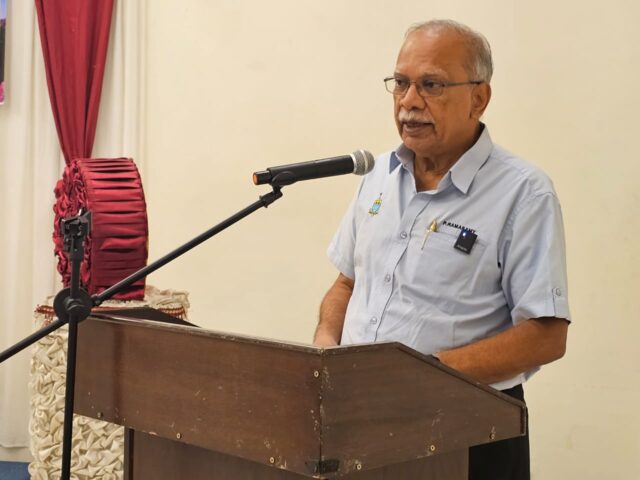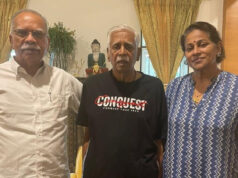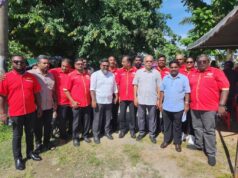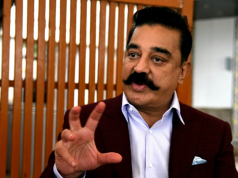 COMMENT BY PROF DR.P.RAMASAMY,
COMMENT BY PROF DR.P.RAMASAMY,
FORMER DEPUTY CHIEF MINISTER II, PENANG
Limits of multiracialism in Malaysian politics
Multi-racialism emerged as an alternative way of organising and representing ethnic and religious communities as opposed to ethnic political representation.
Malaysian politics from the time of political independence until today seems to function on ethnic representation as opposed to multi-racialism.
Ethnic representation in the form of elite cooperation and understanding came to be termed as consociational politics. However, organising and representing society on the basis of ethnicity or religion might be the dominant organisational paradigm, but there are other alternatives.
However, such a paradigm was not without opposition. The idea of multi-racialism as a concept was mooted earlier by the left-wing political parties predicated on economic, social and political deprivation of a social class in other words the working class.
With the demise of the revolutionary left, multi-racialism came to be embodied in the formation of social democratic political parties such as the PAP, DAP and others.
The rise of the social democratic political parties was a recognition that there was a different way in eliminating class exploitation other than the revolutionary methodology.
Unlike the DAP, the PKR is not based on the idea of social democracy. It labels itself as multiracial on the basis of diverse ethnic and religious representation.
Social democracy or not multi-racialism was predicated on the notion of human equality of equal social, political and economic rights.
While the ethnic ideology was the reigning ideology for some time, the attraction of multi-racialism was there. Its popularity was the direct consequence of the application of the ethnic ideology on matters of political governance or the discrimination of the non-Malays.
It was just a matter of time before the DAP gained adherents to its cause of social justice immaterial of ethnicity or religion. In 2008 elections, the DAP together with PKR and others gained state power in five states.
In the 2018 federal elections, the DAP and PKR under the political coalition of PH gained short-lived federal power. In the last federal elections in 2022, DAP and PKR with others formed the federal government under the leadership Prime Minister Anwar Ibrahim.
The DAP and PKR have come a long way from the days of their unpopularity.
They are members of the ruling coalition of the Madani government. Their leaders wield considerable political and economic power. However, the forces that propelled the rise of the multi-racial political parties such as the DAP and PKR might have been subverted in the transformative process.
Adherence on the part of the DAP to social democracy has diminished considerably. It appears as a slogan in the party pamphlets and brochures.
The party calls itself as a multiracial political party but its submergence under the political weight of the majoritarian politics of the present generation has raised questions of its multi-racialism.
Multi-racial political parties while in opposition and in power are two different things. It is reflective of the changes in the ideational and material realms.
The ideology that pushed the multiracial political parties to the forefront might not be there under the transformed political and social circumstances.
It is just not changes in the realm of ideas but also how the material base of these multiracial political parties have changed considerably.
Today, the ideology of multi-racialism of these two political parties seem to operate superficially. The ideology has been sacrificed to political expediency of power and positions.
As they say, it not the consciousness that determines the being but the being that determines the consciousness. The transformation of the material positions of the DAP and to some extent the PKR has meant among other things the ideological weakening of the idea of multiracialism.
These two parties by virtue of they being the component parties of the ruling regime have come to endorse the majoritarian policies of the government in power.
These majoritarian policies are invariably those in favour of the Malays.
Questions of ethnic and religious equality of the non-Malays have been sacrificed by the DAP and PKR to appease those who represent the majoritarian interests.
The issues of reform, rights of the non-Malays—educational, economic and cultural—have been sidestepped by the leaders in the DAP and PKR for the purpose of political and material survival.
The Indians by virtue of their numerical inferiority and material deprivation are most affected ethnic group that stands to suffer from the change from multi-racialism to the hegemony of majoritarian politics.











